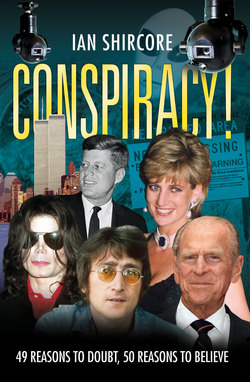Читать книгу Conspiracy! 49 Reasons to Doubt, 50 Reasons to Believe - Ian Shircore - Страница 24
На сайте Литреса книга снята с продажи.
IF THE DETAILS ARE WRONG, CAN THE STORY BE RIGHT?
ОглавлениеThe 7 July bombings in London in 2005 killed 56 people and injured more than 700, amid scenes of nightmare carnage and horror.
The four bombs were apparently detonated by four al-Qaeda-inspired terrorists – Mohammad Sidique Khan, Shehzad Tanweer, Hasib Hussain and Jermaine Lindsay – all of them British nationals. All four men were found among the dead, making it the first time suicide bombing techniques had been used in Britain.
Three bombs exploded with devastating force in crowded late-rush-hour tube trains, at Aldgate, Edgware Road and King’s Cross, at around 8.50am, while the fourth blew up 57 minutes later on a double-decker bus in a London square.
Responsibility for the attacks was immediately claimed by the ‘Secret Organisation Group of Al-Qaida of Jihad Organisation in Europe’, though this was quickly dismissed as a crude attempt to jump on the bandwagon.
But the tangled, elusive story of 7 July 2005 led many people to question what happened and who did it, and what the thinking and motives were that led to so many deaths and injuries.
The main theories were:
1) The four British Muslims planned and carried out their own suicide bomb assault on the people of London.
2) The four bombers carried out the suicide bomb attacks under direct orders from al-Qaeda planners.
3) The bombers were following al-Qaeda instructions but had not been told they would not be returning from their bomb-planting mission.
4) The four men were set up as patsies in a plot by one or more Western intelligence services aimed at boosting support for the War on Terror – or at least allowed to go ahead with their own plot, either deliberately or through incompetence.
5) The four came to London thinking they were taking part in some sort of training exercise, arrived late, then heard about the bombs. Realising they’d been framed and were meant to die in the blasts, they fled towards Docklands and Canary Wharf, in the hope of achieving safety by taking their story to the media. They were then shot dead by anti-terrorist police at Canary Wharf, while a huge cover-up operation swung into action.
The official account2 of what happened in Britain’s worst terrorist atrocity since the Lockerbie bombing in 1988 saw the attacks as homegrown terrorism, inspired by al-Qaeda, but not planned abroad. Specific instructions from overseas masterminds were no longer suspected.
The idea that the London bombers were set up as ‘involuntary suicides’ also went out of fashion. Once it was noticed that the 7/7 bombs did not seem to have timers, this became less likely. Cynics did point out that simply telling your terrorist there was a delay mechanism, when there wasn’t one, might effectively turn a walk-away bomber into a suicide martyr. But this line of thought was greatly undermined by the two suicide videos left behind by Khan and Tanweer.
The general assumption had always been that the four men – three from West Yorkshire and one from Aylesbury, in Buckinghamshire – were suicide bombers, intent on achieving jihadi martyrdom. But there were some strange hints that they might have been expecting to come back after their mission to London.
On their journey south to London’s King’s Cross, they bought return train tickets and a parking ticket at Luton station. They left more bombs and detonators in the boot of one of the parked cars. They each carried a number of items – credit cards, receipts and even a passport – that made identification possible and helped lead straight back to the bomb factory in Leeds, which was still operational.
Strangest of all were the actions of Hasib Hussain, who was trying to call the other three on his mobile phone some time after their bombs had gone off. If he knew they were all on a suicide mission, this would seem like odd behaviour.
Hussain seems to have decided that his bomb wouldn’t work and gone to buy a new battery. He called the others, presumably to see if they’d had the same problem, though, of course, they had already been dead since ten to nine. Hussain was evacuated with the general public from King’s Cross station at 8.54am, obviously in response to the emergency underground. But he tried to telephone the other three, a couple of times each, over the next 20 minutes or so.
Unable to get back into the tube, he apparently went to get a bite to eat in McDonalds, then got on a number 91 bus towards Euston, got off again and boarded the ill-fated number 30 that was finally blown up in Tavistock Square.
